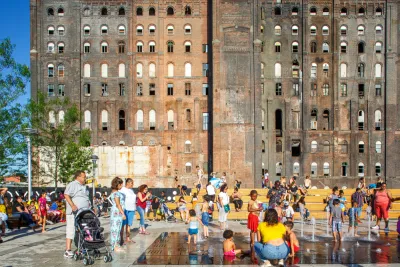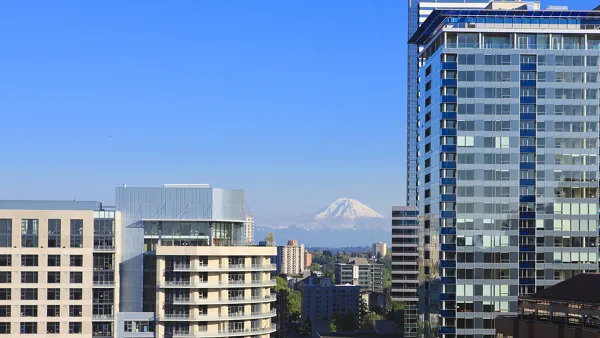The past decade saw more old commercial buildings transformed into residential buildings than any decade previous.

Alexandra Ciuntu explains the findings of a recent study by RentCafé, which quantifies the number of buildings converted from commercial to residential years in a 70-year history of adaptive reuse.
According to the study, the last decade saw more adaptive reuse projects completed than ever, led by Chicago and New York City. Here's how Ciuntu summarizes the nature of adaptive reuse, as well as the key findings of the study:
The U.S. has its fair share of beautiful old buildings — many of them historical — that are often underused or even abandoned. But, through adaptive reuse, they can be repurposed and converted to residential use. This trend took off in last decade, when 778 old buildings were transitioned into apartment communities. In total, 1,876 such buildings have been converted into apartments since the 1950s. From abandoned dispensaries to vintage gramophone factories, we dug into Yardi Matrix data to uncover where these projects are most common and what they were in their past lives.
The article includes several useful charts and infographics to illustrate some of the report's findings, including this breakdown of adaptive reuse projects by decade.
Drilling down to geographic specificity, the report identified the Big Apple and the Windy City as two leading practitioners of adaptive reuse. In terms of numbers of buildings converted, Chicago leads the pack. In terms of number of apartment units created, New York leads the pack. Los Angeles and Philadelphia both appear at the top of the list in both metrics as well.
The study also quantifies the kinds of old commercial buildings most likely to be converted to residential uses, with factories leading the way, just ahead of hotels.
FULL STORY: Yesterday’s Factories, Today’s Apartments: Conversions at All-Time High in the U.S.

National Parks Layoffs Will Cause Communities to Lose Billions
Thousands of essential park workers were laid off this week, just before the busy spring break season.

Retro-silient?: America’s First “Eco-burb,” The Woodlands Turns 50
A master-planned community north of Houston offers lessons on green infrastructure and resilient design, but falls short of its founder’s lofty affordability and walkability goals.

Delivering for America Plan Will Downgrade Mail Service in at Least 49.5 Percent of Zip Codes
Republican and Democrat lawmakers criticize the plan for its disproportionate negative impact on rural communities.

Test News Post 1
This is a summary

Test News Headline 46
Test for the image on the front page.

Balancing Bombs and Butterflies: How the National Guard Protects a Rare Species
The National Guard at Fort Indiantown Gap uses GIS technology and land management strategies to balance military training with conservation efforts, ensuring the survival of the rare eastern regal fritillary butterfly.
Urban Design for Planners 1: Software Tools
This six-course series explores essential urban design concepts using open source software and equips planners with the tools they need to participate fully in the urban design process.
Planning for Universal Design
Learn the tools for implementing Universal Design in planning regulations.
EMC Planning Group, Inc.
Planetizen
Planetizen
Mpact (formerly Rail~Volution)
Great Falls Development Authority, Inc.
HUDs Office of Policy Development and Research
NYU Wagner Graduate School of Public Service




























